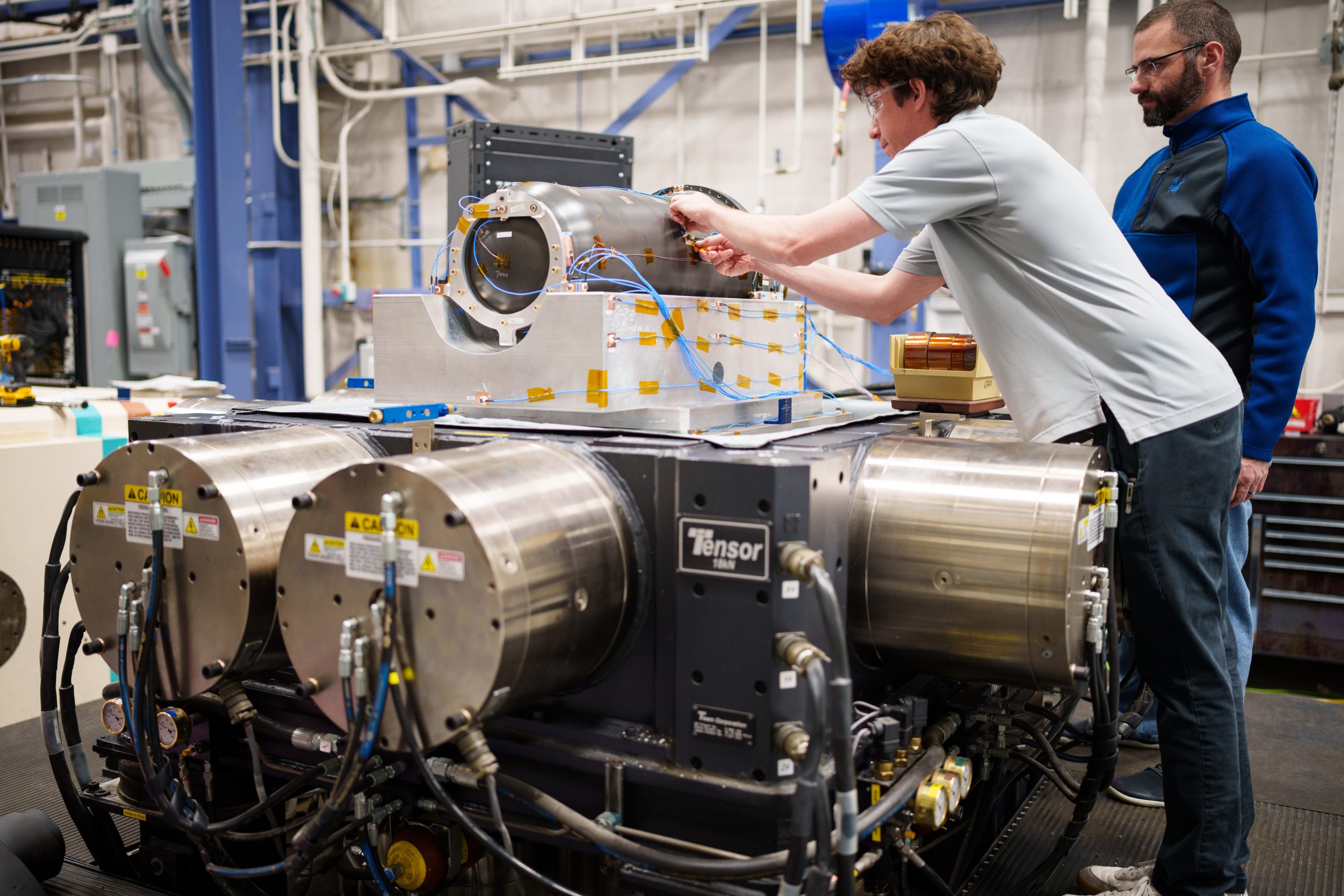
ALBUQUERQUE, N.M. — Testing weapons and components in a lab-controlled environment has always been at the center of Sandia National Laboratories’ mission. Since the U.S. stopped underground explosives tests on weapons in the early 1990s, Sandia has developed other methods to conduct experiments that mimic the range of environments a weapons unit might experience. A newly developed method is getting better results, with fewer tests, in less time.
“Our job in the laboratory is to simulate the environment and lifetime of stress that the weapon units experience out in the field,” said Kevin Cross, a mechanical engineer who oversees Sandia’s vibration lab. “Using multiple input, multiple output testing is a much more realistic representation of what those units experience in flight and out in the field.”
One multiple input, multiple output testing machine is called the six degrees of freedom shaker. The shaker table simultaneously moves the x-, y- and z-axes, while also rotating each axis.
Over the past few years, Sandia has been expanding the methodology for multiple input, multiple output experiments for nuclear deterrence systems.
Qualification testing

Sandia recently used the six degrees of freedom shaker for qualification of the W80-4 — a first for a weapons system that will go into the U.S. stockpile. A variety of information is used for qualification — or ensuring the system meets requirements — including experimental data.
“This capability has been beneficial because it more accurately represents the environment a deterrence system would withstand in the field,” said Christy Turner, who oversees system and environmental testing for the W80-4. “It’s also beneficial from a schedule standpoint. Testing using the six degrees of freedom shaker takes about a third of the time as a full mechanical shock and vibration test.”
Sandia has one of only a few six degrees of freedom machines in the country.
“In single-axis testing, we test each axis independent of each other, so it’s three times the amount of testing than in a multiple input, multiple output test,” Cross said. “We by far lead the way here at Sandia on multiple input, multiple output testing.”
Building techniques and capacity
To carry out qualification tests for the W80-4, Cross and his team developed specific methodology for the system and built a bespoke multiple input, multiple output test stand for it.

“The testing equipment and methodology are building capacity to meet the mission, and it’s giving us higher fidelity data,” Cross said.
Turner has been pleased with the teamwork.
“The experts at the vibration facility have brought us a solution that helps reduce risk from a schedule standpoint,” she said. “This is an important example of collaboration across divisions at Sandia.”
Since recent environmental tests were completed on the W80-4, other nuclear deterrence programs have taken notice and are exploring similar multiple input, multiple output experiments for their systems.
“The big selling point in terms of the nuclear deterrence community is that we can significantly reduce the amount of test time required,” Cross said. “Not only are we getting a much better, much more realistic dataset, but we’re also doing it considerably faster.”